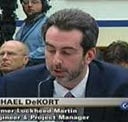Driverless Vehicle Lawsuits need to be careful how they define a “Product”
Civil lawsuits being filed to deal with autonomous vehicle accidents often involve product or performance liability. The problem here is how many define that. In most cases outside this industry the issue involves a production or commercial ready product or service defect. Few of the driverless vehicles out there are production systems. They in development and use humans as test subjects. These are SAE L2 and possibly L3 systems. Not a L4 which would be production ready. These means that unless the product is defined to have some geofenced production capability they are in development or are prototypes.
To develop these systems the autonomous vehicle makers, use a process of public shadow and safety driving to develop these systems. This process is used because it is assumed it is the best or only way to develop this technology. A large part of that involves a safety driver. Therefore, it is also assumed handover to them can always be made safe. And when there are accidents, injuries or casualties they are for the greater good. Of course, none of that is true.
The process is actually untenable, has killed six people to date for no reason and will kill thousands more when accident scenarios are learned. It is impossible to drive the one trillion miles or spend over $300B to stumble and restumble on all the scenarios necessary to complete the effort. In addition, the process harms people for no reason. This occurs two ways. The first is through handover or fall back. A process that cannot be made safe for most complex scenarios, by any monitoring and notification system, because they cannot provide the time to regain proper situational awareness and do the right thing the right way, especially in time critical scenarios. The other dangerous area is training the systems to handle accident scenarios. In order do that AV makers will have to run thousands of accident scenarios thousands of times. That will cause thousands of injuries and deaths. (The solution is to switch 99.9% of this to DoD simulation technology. All informed and validated by real-world data. Not gaming or vehicle manufacturing based systems as they have significant real-time and model fidelity flaws in complex scenarios.)
I believe the result of this is if your definition of a “product” is a production ready version vs a system in development you will have an uphill climb. The driverless vehicle maker will say they work “as designed” which is not fully deigned yet. If, however you make the argument that public shadow and especially safety driving is an untenable and reckless process for the reasons stated above, and as such should not exist, you may have a much easier go.
Please find more information on this below
Autonomous Vehicles Need to Have Accidents to Develop this Technology
Proposal for Successfully Creating an Autonomous Ground or Air Vehicle
Using the Real World is better than Proper Simulation for AV Development — NONSENSE
Simulation can create a Complete Digital Twin of the Real World if DoD/Aerospace Technology is used
My name is Michael DeKort — I am a former system engineer, engineering and program manager for Lockheed Martin. I worked in aircraft simulation, the software engineering manager for all of NORAD, a PM for the Aegis Weapon System, and C4ISR systems engineer for DHS.
Key Industry Participation
- Lead — SAE On-Road Autonomous Driving SAE Model and Simulation Task
- Member SAE ORAD Verification and Validation Task Force
- Member DIN/SAE International Alliance for Mobility Testing & Standardization (IAMTS) Sensor Simulation Specs
- Stakeholder for UL4600 — Creating AV Safety Guidelines
- Member of the IEEE Artificial Intelligence & Autonomous Systems Policy Committee (AI&ASPC)
- Presented the IEEE Barus Ethics Award for Post 9/11 Efforts
My company is Dactle
We are building an aerospace/DoD/FAA level D, full L4/5 simulation-based testing and AI system with an end-state scenario matrix to address several of the critical issues in the AV/OEM industry I mentioned in my articles below. This includes replacing 99.9% of public shadow and safety driving. As well as dealing with significant real-time, model fidelity and loading/scaling issues caused by using gaming engines and other architectures. If not remedied these issues will lead to false confidence and performance differences between what the Plan believes will happen and what actually happens. If someone would like to see a demo or discuss this further please let me know.
